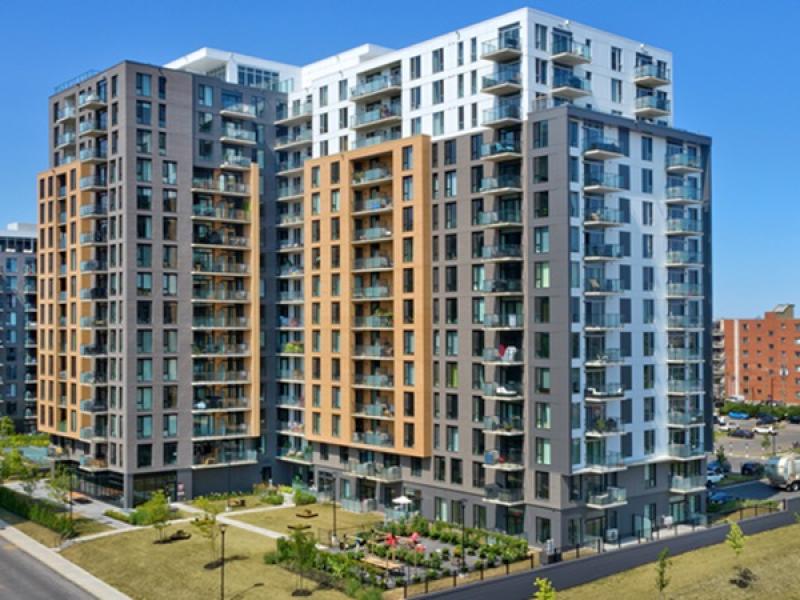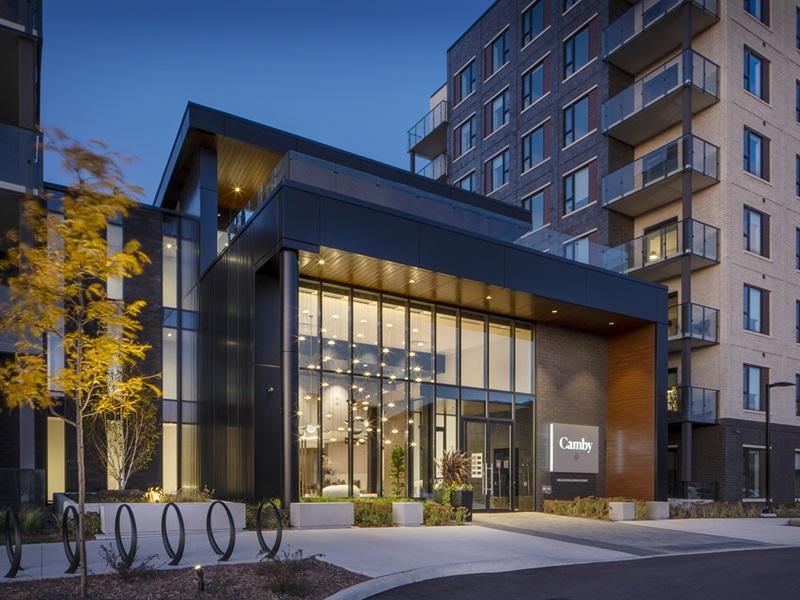
Derek Lobo of SVN Rock Advisors. (Image courtesy SVN)
“If you build it they will come” isn’t just an adapted line from the 1989 baseball movie Field of Dreams. SVN Rock Advisors Inc., Brokerage founder and CEO Derek Lobo applied the phrase to both Canadian apartment renters and building buyers during a Jan. 16 webinar on new apartment development.
There are 2.13 million apartment units across Canada. Almost 25,500 new units entered the market in 2019, about 1,000 fewer than in 2018. To put those figures into perspective, Lobo said the Dallas Fort-Worth area builds as many apartment units annually as all of Canada.
One of SVN’s major activities is conducting feasibility studies for new apartment buildings, so it tracks activity across Canada. Its research shows there are 51 new rental apartment developments with 9,980 units under construction. They average 19 storeys and 203 units.
More than 10,000 units entered the Quebec market last year compared to just over 4,000 in Ontario, the second-leading province.
“Quebec has a culture of renting unlike anywhere else in Canada,” said Sally Turner, SVN’s director of research and consultancy, who participated in the webinar along with Lobo.
Apartment development increased in British Columbia, New Brunswick, Nova Scotia, Prince Edward Island and the Northwest Territories in 2019.
Toronto and Halifax new apartment additions
There are approximately 3,000 units under construction in Toronto, where 1,921 new units entered the market last year.
The city’s population has been increasing steadily for several years without a corresponding number of apartments being built and Lobo said developers haven’t been building to accommodate future demand.
It was pointed out that Toronto’s population is about 10 times the size of Halifax, yet just 143 fewer new apartment units entered the market in the Nova Scotia capital than in Canada’s largest city.
Halifax has approximately 4,100 units moving through its planning pipeline.
“Halifax isn’t building too many apartments,” said Lobo. “Toronto is building too few apartments.”
Montreal leads the way among Canada’s major cities with 14.4 apartment units per 100 people and doesn’t have an oversupply. Halifax, at 12.7, was the only other city with a ratio above 10.
Of 15 cities highlighted in the webinar, St. John’s, N.L., ranked lowest with just two apartment units per 100 people.
No markets have a huge apartment vacancy problem, as all 15 cities except St. John’s have vacancy rates of under five per cent.
Lobo said developers in many American cities start building apartments when the vacancy rate hits five per cent, which he offered as further justification for more apartment construction in Canada.
Apartment construction considerations
When developing an apartment building, Lobo said one of the biggest considerations is whether to sell it or keep it long-term.
Merchant apartment builders should focus on areas where there is plenty of liquidity so they can sell the property quicker and easier. While a smaller town might produce higher yields, there will be fewer options when it comes to purchasers, according to Lobo.
“If you build a very small building, it has high liquidity because it could have a lot of buyers,” said Lobo.
“If you build a large building, over $100 million, then you’re going to have to worry about your buyer pool.
“For more than $100 million, there’s not any more than 10 or 15 buyers in the country that do things like that.”
Lobo emphasized the importance of getting the parking balance right for long-term apartment owners because “you’re going to live with that problem forever” if you don’t.
Lobo said most renters of new apartments are discretionary renters at the top of the market who are often coming out of rental condos or single-family homes.
They’ll go down in size but not quality when it comes to their new residence, he added.
Breakdown of apartment sales
SVN tracks the sales of apartment buildings built since 1991. Ontario led the country last year with 93 sales, followed by B.C. at 85, Alberta at 68, Quebec at 65, New Brunswick at 20, Nova Scotia at 16 and P.E.I. at four.
There’s been an overall upward trend in the annual number of apartment building transactions since 1991.
Edmonton had the most transactions of apartments built since 1991 last year with 37. It was followed by Vancouver with 30, Montreal with 27, Toronto with 18, Halifax with 16, Quebec City with 13, Ottawa with 12 and London with 10.
The average price per property and per unit has steadily increased over the past 30 years and unit sizes have also grown. Apartments built in 2019 sold for an average price of more than $350,000 per unit compared to about $100,000 per unit for those built in 1997.
Lobo said SVN was involved in a deal last year that had a value of more than $570,000 per unit and he expects there to be a deal for $1 million per unit in the not-too-distant future.
“There are more and more buyers entering the space,” said Lobo, who thinks the Canada Pension Plan Investment Board would love to invest in new apartment buildings in major Canadian cities, but finds it difficult to enter the space since there are so few being built and sold.
“If there were more built, there would be more money coming. But, there’s not more money coming because they’re not being built. It becomes a little bit of a circle.”
Opportunities to build smaller apartments
Lobo said 80 per cent of the apartments built in Canada between 1950 and 1975, when much of the existing stock was constructed, were smaller buildings. He believes there’s a “huge opportunity” now for smaller developers to build apartments of fewer than 50 units.
“When you go to smaller buildings, the buyer pool gets larger. Lots of people can afford a $5-million or $10-million building. Not that many people are in a position to buy a $100-million building.”
There’s been a general trend of capitalization rate compression for apartment buildings in cities across Canada since 2016 and Turner expects that to continue.
Lobo said many older apartments that have rent controls and aren’t in particularly good shape have been selling with a cap rate of three or less because there’s potential upside in rent increases for turning over tenants, or there’s room for increased density and development on the property.







